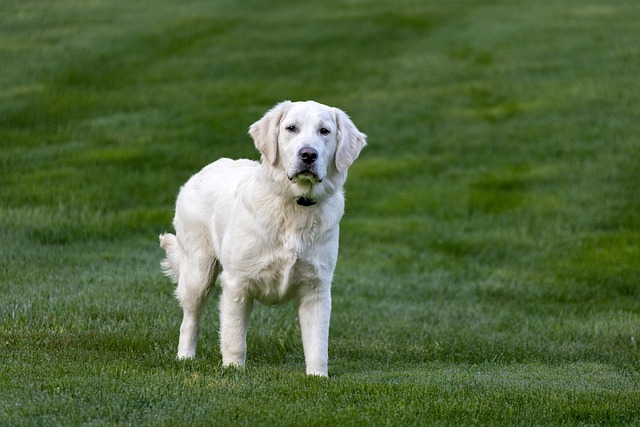
How can I tell if my dog's heatstroke is serious
Let’s be real: It’s a sticky August morning in Los Angeles, and you took your 2-year-old Golden Retriever, Max, for a walk a little later than usual
Switching your dog’s food might seem straightforward, but anyone who’s cleaned up after a sudden bout of diarrhea knows it’s trickier than it looks. Dogs, especially those with sensitive tummies, thrive on consistency—their digestive systems take time to adjust to new proteins, fibers, or additives. Rushing the process can lead to vomiting, loose stools, or even refusal to eat, which isn’t just messy; in some regions, like parts of the UK where neglect laws are strict, letting a dog become unwell due to improper feeding could raise red flags. Take Max, a golden retriever in Oregon I met last year: his owner swapped his kibble overnight for a “premium” brand, and within 48 hours, he was lethargic. A vet later confirmed it was due to a sudden food change.
The key is to transition gradually, typically over 7 to 10 days. Start by mixing 25% of the new food with 75% of the old one. Over the next few days, slowly increase the ratio—50-50 on day three or four, then 75% new and 25% old by the end of the first week. This gives your dog’s gut bacteria time to adapt, reducing the risk of stomach upset. It’s a method vets across Europe and North America swear by, and it aligns with guidelines from organizations like the American Kennel Club. For puppies or senior dogs, who often have more delicate digestive systems, stretch the transition to 14 days. I once helped a client in Berlin with a 12-year-old dachshund; taking an extra week made all the difference in preventing her usual post-meal discomfort.
 Not all food changes are voluntary, though. Sometimes a vet recommends a prescription diet to manage conditions like allergies or kidney issues. In these cases, the transition still matters, but you’ll want to follow your vet’s timeline—they might suggest a faster switch if the health benefits outweigh the temporary stomach upset. It’s also worth noting that in places like Germany, where pet food labeling laws are stringent, checking the new food’s ingredients for common irritants (like excessive grains or artificial preservatives) can help anticipate issues. A friend in Paris learned this the hard way when switching her border collie to a cheaper brand; hidden soy fillers caused persistent gas until she switched back to a higher-quality option.
Not all food changes are voluntary, though. Sometimes a vet recommends a prescription diet to manage conditions like allergies or kidney issues. In these cases, the transition still matters, but you’ll want to follow your vet’s timeline—they might suggest a faster switch if the health benefits outweigh the temporary stomach upset. It’s also worth noting that in places like Germany, where pet food labeling laws are stringent, checking the new food’s ingredients for common irritants (like excessive grains or artificial preservatives) can help anticipate issues. A friend in Paris learned this the hard way when switching her border collie to a cheaper brand; hidden soy fillers caused persistent gas until she switched back to a higher-quality option.
Monitoring your dog’s reaction is just as important as the transition itself. Keep an eye out for signs like increased flatulence, loss of appetite, or mucus in stools—these are all hints that the new food might not agree with them, or that you’re moving too quickly. If symptoms persist for more than a day or two, it’s time to consult a vet. In some countries, like Sweden, pet insurance often covers such consultations, so it’s worth checking your policy. Remember, every dog is different: while one might handle a 5-day transition, another might need twice as long. Being patient saves both of you stress in the long run.
Finally, consider the “why” behind the switch. Are you moving to a higher-protein diet for an active breed, or switching to a grain-free option due to allergies? Understanding your dog’s specific needs can guide your choice of new food and make the transition smoother. In the US, where raw food diets have grown popular, it’s crucial to source from reputable brands to avoid bacterial risks—something the FDA has warned about in recent years. Similarly, in the EU, where certain additives are banned, sticking to EU-approved foods can reduce digestive risks. By combining a slow transition with informed choices, you’ll keep mealtimes happy and your dog’s stomach calm. After all, a healthy, comfortable pup is the best sign that your new food is the right fit.

Let’s be real: It’s a sticky August morning in Los Angeles, and you took your 2-year-old Golden Retriever, Max, for a walk a little later than usual

You're enjoying a summer afternoon at the park when you notice your dog has stopped panting and appears disoriented - their gums are bright red

Let’s paint the picture: You’re in your Denver apartment, watching your 4-year-old Boston Terrier, Ruby, plop down mid-play session with her favorite toy

Many dog owners notice their pets nails seem shorter after regular walks,but how much does this daily activity actually help?The answer depends on where you walk—concrete sidewalks or asphalt streets gently file nails as a dog's paws hit the ground

Most dog owners notice their pup scooting across the carpet at some point, but few connect it to impacted anal glands. These small sacs near a dog’s rectum secrete a scent for marking territory

Most vets agree that regular dog teeth cleaning is key to avoiding painful dental issues later. For healthy adult dogs, a professional cleaning at the vet’s office every 12 to 18 months usually works well.